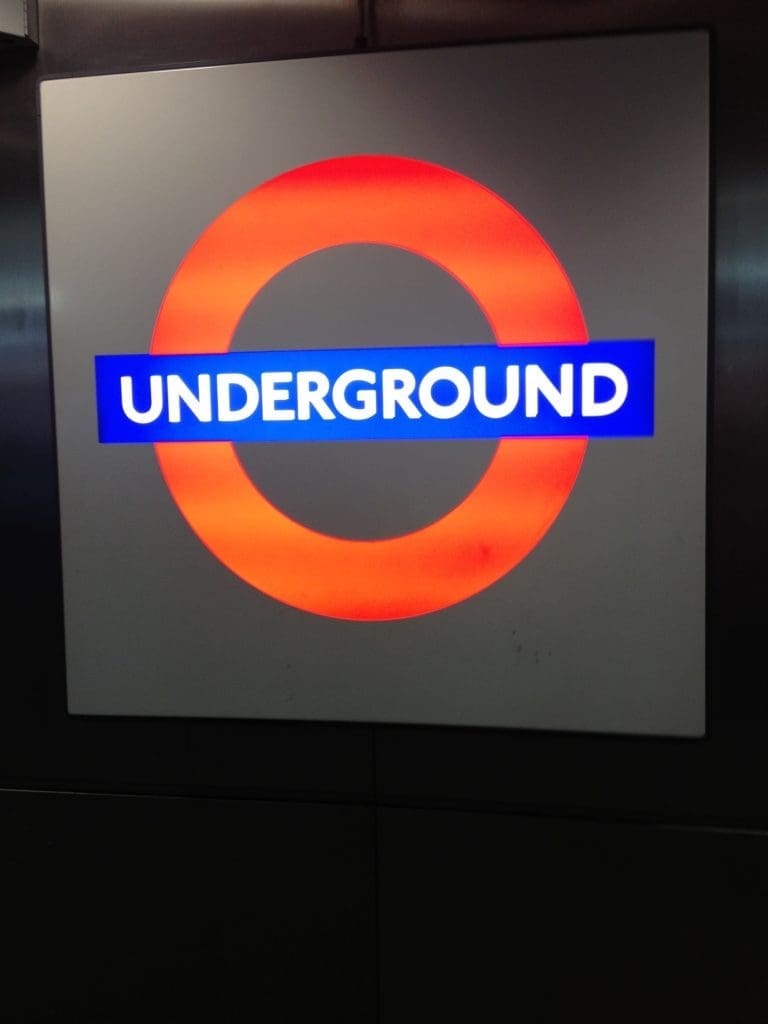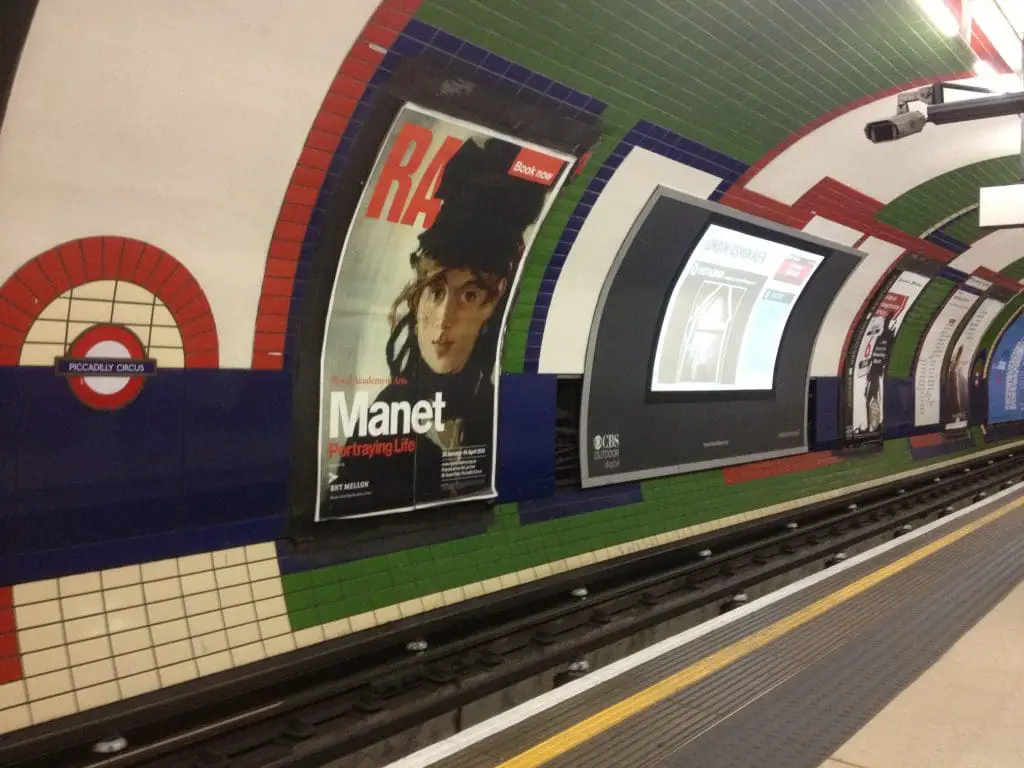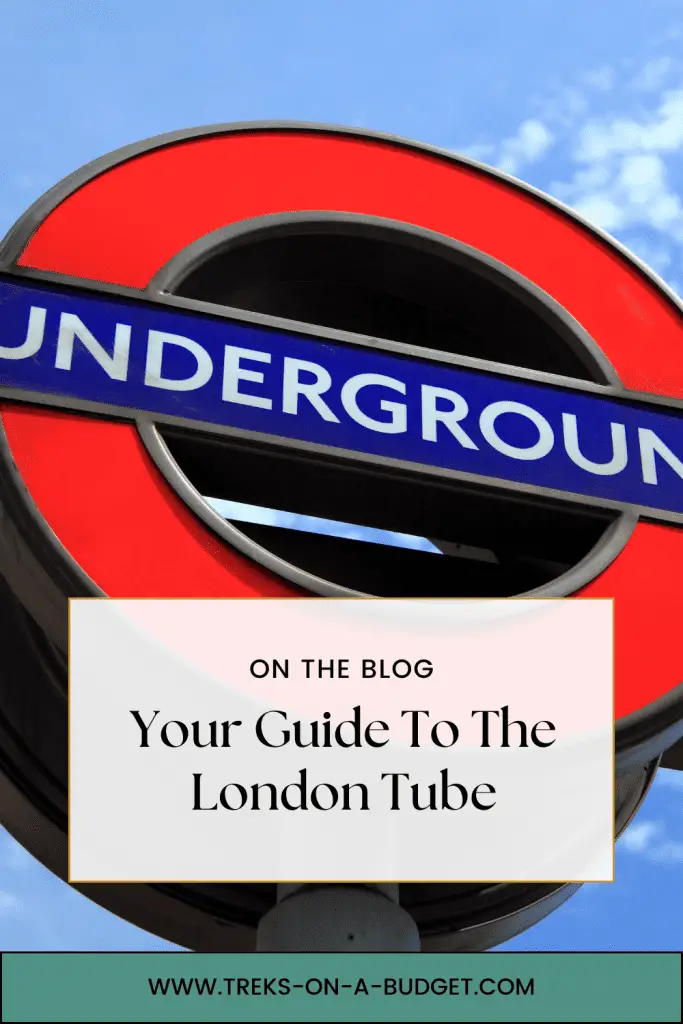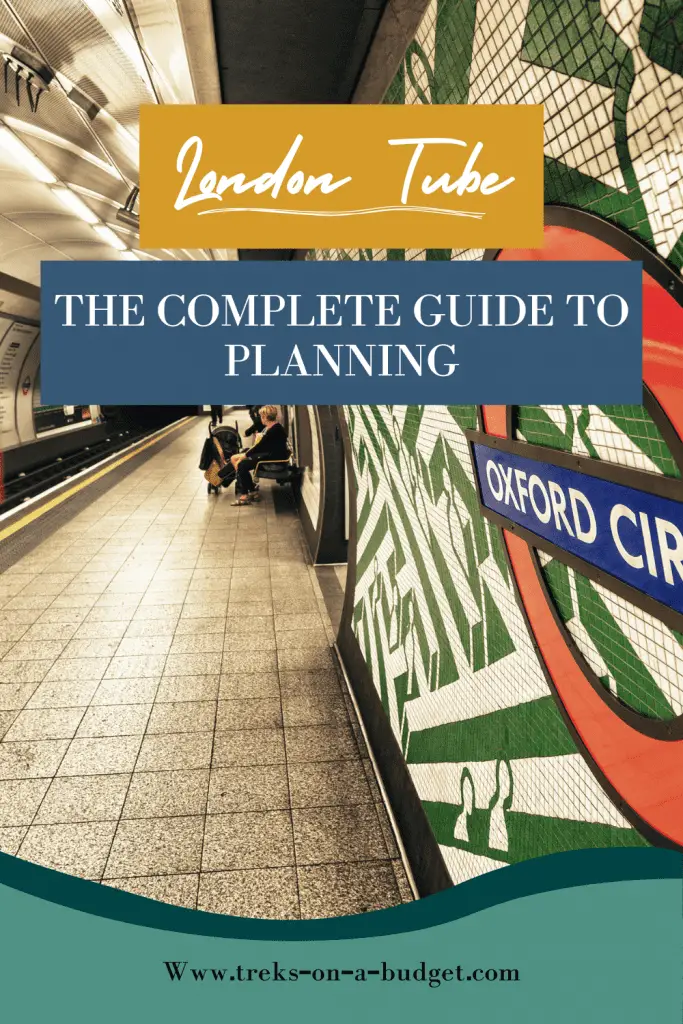Guide to London’s Subway System: Navigating the Tube with Ease
Estimated reading time: 14 minutes
Navigating the Tube in London is like unlocking the city’s heartbeat. With Transport for London overseeing a vast network, including the London Tube, getting around is a breeze. The London Underground map is your treasure map, guiding you through the veins of the city, connecting you to all modes of public transport. Planning your journey is key, allowing you to explore London travel options with ease and confidence. That’s why there’s their helpful guide to London’s Subway system.

Whether you’re commuting or exploring, the London Underground is a gateway to adventure. Each journey tells a story, from bustling stations to the iconic London Underground logo that marks your entry to the Tube. It’s not just about getting from A to B; it’s about embracing London’s public transport network as a way to discover the city’s charm.
Table of contents
- Getting Started: Essential Basics
- Tickets and Fares: Paying Your Way
- Travel Tips : Making Your Journey Smoother
- Advanced Navigation: Beyond the Basics
- Special Features of the London Underground
- Paying for the Tube: Saving Money on Your Journey
- The Cultural Experience: Unique Aspects of the Tube
- In Conclusion: Mastering the London Tube
Getting Started: Essential Basics
Before you board, know the basics. Always check the signs and listen for announcements to exit the train safely. This small step is crucial for a smooth Tube experience. This guide to London’s subway system is here to help every step of the way.
Understanding the London Tube Map

The London Tube map is your best friend when visiting London. Google Maps and the Tube map help locate tourist attractions easily. The map is divided into nine zones, including zone 9, simplifying your navigation through the city.
Zones and Their Importance
Zones are at the heart of London’s public transport network. From Canary Wharf to London Heathrow Airport, the network is divided to connect London efficiently. Key destinations like Shenfield and Abbey Wood are reachable thanks to this well-thought-out system.
Focus on Colors: Lines of the London Underground
In this guide to London’s subway system, the lines of the London Underground are color-coded for easy navigation. Canary Wharf is just a blue line away, while Heathrow is accessible via the dark blue Piccadilly Line. The network is divided, connecting London through a rainbow of options, each leading to destinations like Shenfield and Abbey Wood.
How Many Lines Does the London Underground Have?
The London Underground boasts an extensive network divided into several lines. Each line serves as a pathway to various corners of the city, ensuring that every journey is covered.
London Underground Opening Times and the Night Tube
The Night Tube offers a 24-hour night service on Fridays and Saturdays, perfect for exploring the centre of London. Tube trains also run from Monday to Saturday with reduced operating hours.
Guide to London’s Subway System: The Advent of the Night Tube
Travelling on the Tube at night has become a game-changer. The Night Tube allows adventurers and night owls to explore London’s vibrant nightlife safely and conveniently.
Operating Hours for Regular Service
Travelling on the Tube during regular hours connects you to London’s heartbeat. From early morning to late evening, the Tube trains are ready to whisk you away to your next destination.

Tickets and Fares: Paying Your Way
No guide to London’s subway system would be complete without talking about the Oyster Card. Paying your way through London’s underground is easy with Oyster cards, contactless payment cards, and paper tickets. The daily cap and zones 1-2 offer affordable rates for accessing attractions in the city.
London Underground Tickets and Oyster Cards
The guide to London’s subway system helps with planning your journey. For seamless travel, Oyster cards, contactless payment cards, and paper tickets are essential. They offer convenience, with a daily cap making travel within zones 1-2 surprisingly affordable.
Visitor Oyster Card: Benefits and How to Use
The Visitor Oyster card opens up London, granting access to the London Overground and National Rail services. This rail service is your key to exploring beyond the Underground.
Travel Cards vs. Oyster Cards: Making the Right Choice
Choosing between Oyster cards and Travel Cards depends on your travel needs within zones 1-2. Both offer a daily cap, making them budget-friendly options for exploring the city.
Daily Limits and Child Discounts
Traveling within zones 1 and 2 comes with perks, like daily limits that keep costs down. Children under 11 can travel for free, making it easier for families to explore the zones they travel.
The Pros and Cons of Riding the Underground
Riding the London Tube is an experience filled with ups and downs. Hopefully this guide to London’s subway system helps with all of this. While it’s the fastest way to zip across the city, peak times can see it crowded. Yet, the convenience and efficiency it offers make it a favored choice among Londoners and visitors alike.
Travel Tips: Making Your Journey Smoother

Planning your journey on the London Tube can make traveling across the city a breeze. By understanding the London Tube map and knowing when trains run frequently, riders can avoid the rush and enjoy a smoother ride. Remember, tube carriages can get crowded, so knowing the best times to travel can enhance your experience. Always check for daily or weekly travel cards at visitor centres to save money and time. That’s why this helpful guide to London’s subway system is here.
Tube Etiquette: Do’s and Don’ts
While riding the London Tube, respecting fellow passengers is key. Simple acts like giving up your seat for those in need and keeping noise to a minimum make the journey pleasant for everyone. Also, remember to check for any specific rules at visitor centres or online to ensure a smooth ride.
Escalator Etiquette: Stand on the Right
One of the most important rules on the London Tube is to stand on the right side of escalators, allowing others to pass on the left. This keeps foot traffic flowing smoothly and prevents bottlenecks at busy stations. Visitors quickly learn this rule, making their commute faster and more efficient.
Mindful Tubing: Keeping the Journey Pleasant for Everyone
Being mindful of fellow passengers on the London Tube includes using headphones for music, taking up only one seat, and not blocking doors. Small gestures like these ensure that everyone’s journey is comfortable. Keeping the carriages clean by taking your rubbish with you is also appreciated by all.
Navigating Peak Times: Best Strategies
Traveling during off-peak hours can make your journey on the London Tube more enjoyable. Trains run frequently, but peak times can see increased crowds and longer waits. Planning your journey to avoid these times can lead to a more relaxed travel experience.

Times to Avoid on the Tube
The busiest times on the London Tube are from 7:30 to 9:30 AM and from 5:00 to 7:00 PM on weekdays. During these hours, trains and stations become crowded, making travel less comfortable. If possible, plan your journey outside these times to enjoy a more spacious and calm trip.
Advanced Navigation: Beyond the Basics
Mastering the London Tube goes beyond knowing the basic map. Exploring alternative routes and using apps can uncover quicker or less crowded paths to your destination. Don’t be afraid to experiment with different routes, especially during busy times.
The Quickest Route Might Not Be the Obvious One
Sometimes, the fastest way to get around on the London Tube isn’t the most direct route. Transferring lines might seem slower, but it can actually save time. Apps and the London Underground map can help identify these shortcuts. Always plan your journey ahead to find the best route.
Traveling to Heathrow and Other Airports
The London Tube offers direct routes to major airports, including Heathrow. However, depending on your location and time of travel, other modes of public transport might be more convenient or faster. Planning your journey in advance is crucial to ensure a stress-free trip to the airport.
Taking the Tube vs. Alternative Transport Options
While the Tube is an efficient way to reach Heathrow and other airports, alternatives like trains, buses, or taxis might suit your needs better. Consider factors like luggage, travel time, and cost. Sometimes, combining the Tube with other modes of public transport offers the best solution.
Free Newspapers and Magazines on the Tube
The London Tube provides free newspapers and magazines, making your journey more enjoyable. Look for them at station entrances or inside the carriages. They’re a great way to catch up on news or find interesting articles to read.
Keeping Occupied: What to Read During Your Journey
Along with free newspapers and magazines, bringing a book or downloading articles on your phone can be a great way to pass the time on the London Tube. Many passengers enjoy this quiet time to immerse themselves in stories or learn something new.
Special Features of the London Underground
The London Tube is not just a mode of transport; it’s part of the city’s culture. Features like the Night Tube allow for exploration of London after dark, offering a safe and efficient way to return home. Special events and art installations in stations also add to the unique travel experience.
The Night Tube: Exploring London After Dark
The Night Tube service has transformed night-time travel in London. With the Night Tube, visitors and locals alike can enjoy the city’s nightlife without worrying about getting home. Off-peak fares and the use of a Visitor Oyster card can also make these nocturnal adventures more budget-friendly.
The Best Tube Line for Sightseeing in London
For sightseeing, the Victoria and Jubilee lines offer quick access to many of London’s top attractions. Using a Visitor Oyster card for these journeys can save money, especially if traveling during off-peak hours. The London Tube makes exploring the city’s landmarks convenient and straightforward.
Top 10 Free Museums and Galleries Accessible by Tube
London is a treasure trove of culture and history, and many of its gems can be reached via the Tube. The British Museum, with its world-famous exhibits, is just a short walk from Tottenham Court Road Station. Art enthusiasts can hop off at South Kensington Station to explore the Victoria and Albert Museum’s vast collections. The Science Museum and the Natural History Museum, also in South Kensington, offer engaging experiences for all ages. The Tate Modern and Tate Britain, accessible from Southwark and Pimlico stations respectively, showcase remarkable art from the UK and beyond. The National Gallery and the National Portrait Gallery, both a stone’s throw from Charing Cross Station, feature works of iconic artists. The Museum of London, near St. Paul’s Station, delves into the city’s rich history. Lastly, the Design Museum, a short journey from High Street Kensington Station, celebrates innovative design across all sectors.
Paying for the Tube: Saving Money on Your Journey
Smart travelers know that saving money on the Tube starts with understanding the payment options. Contactless payments, including bank cards and mobile payment apps, offer a convenient and often cheaper alternative to traditional paper tickets. By simply tapping in and out at tube stations, passengers can benefit from daily capping, which limits the amount spent per day. This makes exploring London more affordable and hassle-free. Remember, using contactless payments or an Oyster card can significantly reduce travel costs compared to single paper tickets.
How to Plan Your Trip with Savings in Mind
To maximize savings while navigating the Tube, planning ahead is key. Using tools like Google Maps can help identify the most efficient routes, ensuring travelers pay the least amount possible for their journey. By checking the map before leaving, passengers can avoid unnecessary detours and transfers between tube stations. Additionally, traveling during off-peak hours can lead to further savings, making it wise to plan trips outside the busy morning and evening rush hours.
The Role of Contactless Payments and How They Work
Contactless payments at tube stations have revolutionized the way we travel. By simply tapping a contactless credit or debit card, or even a smartphone, on the card reader at the tube stations, passengers can quickly enter and exit without the need for physical tickets. This system automatically calculates the best fare for the day’s travel, including all journeys made across the Tube, Overground, and other Transport for London services. For tourists, visitor centres offer a wealth of information on how to use contactless payments efficiently, ensuring that every trip is as cost-effective as possible.

The Cultural Experience: Unique Aspects of the Tube
The London Underground is much more than just a transport system; it’s a cultural experience. Carrying a Visitor Oyster Card is like holding a key to the city, offering discounted fares and a hassle-free way to explore London. Beyond the convenience, the Tube has its own unique culture, from the iconic map design to the unmistakable ‘Mind the Gap’ announcement. Experiencing the Tube is an integral part of visiting London, blending utility with the unique charm of navigating such a historic transport network.
Common Terms Used on the London Underground
The Tube has its own language.
“Mind the Gap” and Other Iconic Phrases
“Mind the Gap” is perhaps the most iconic phrase associated with the London Underground. This friendly caution is broadcast over speakers to remind passengers to watch their step when boarding or alighting trains. Other familiar terms include “The next station is…” which prefaces announcements of upcoming stops, and “Please stand clear of the closing doors”, a reminder to keep safe as doors close. These phrases are more than instructions; they are part of the unique tapestry that makes the Tube an iconic part of London’s culture.
Tube Mice and Other Unusual Sightings
Among the hustle of the London Underground trains, tiny tube mice scurry along the tracks, becoming an unusual yet charming part of the tube journey for many passengers. These little rodents have adapted to life in the London Underground stations, darting between shadows and surprising commuters. Beyond the mice, sometimes a fox or a pigeon finds its way onto the platforms, adding to the quirky tapestry of life that thrives alongside the public transport routes. These sightings create memorable moments for travelers, making each tube journey unique.
In Conclusion: Mastering the London Tube
Mastering the London Underground network is about more than just knowing the 11 lines or navigating from Covent Garden to Waterloo. It’s about embracing the rhythm of the city, understanding tube etiquette, and appreciating the convenience and efficiency of one of the world’s oldest metro systems. Whether it’s the rush of catching a train just before the doors close or the quiet lull as a train leaves the platform, the tube runs through the heart of London’s public transportation, connecting histories, cultures, and destinations.
Final Thoughts: Embracing the London Underground Lifestyle
Embracing the London Underground lifestyle means more than just taking the tube; it’s about integrating into the flow of the city. From the echo of “Mind the Gap” at London Underground stations to the sight of London Underground trains gliding through tunnels, each element contributes to the unique experience. Observing tube etiquette, like standing on the right on escalators, ensures smooth tube journeys for everyone. With the London Underground network offering step-free access at places like Hammersmith and bus routes connecting across the River Thames, navigating this city becomes an adventure. Ultimately, whether you’re using a 7-day travelcard or tapping in with contactless payments, the tube journeys craft stories and memories, making each trip through the London Underground lines an integral part of city life.
Pin me now










